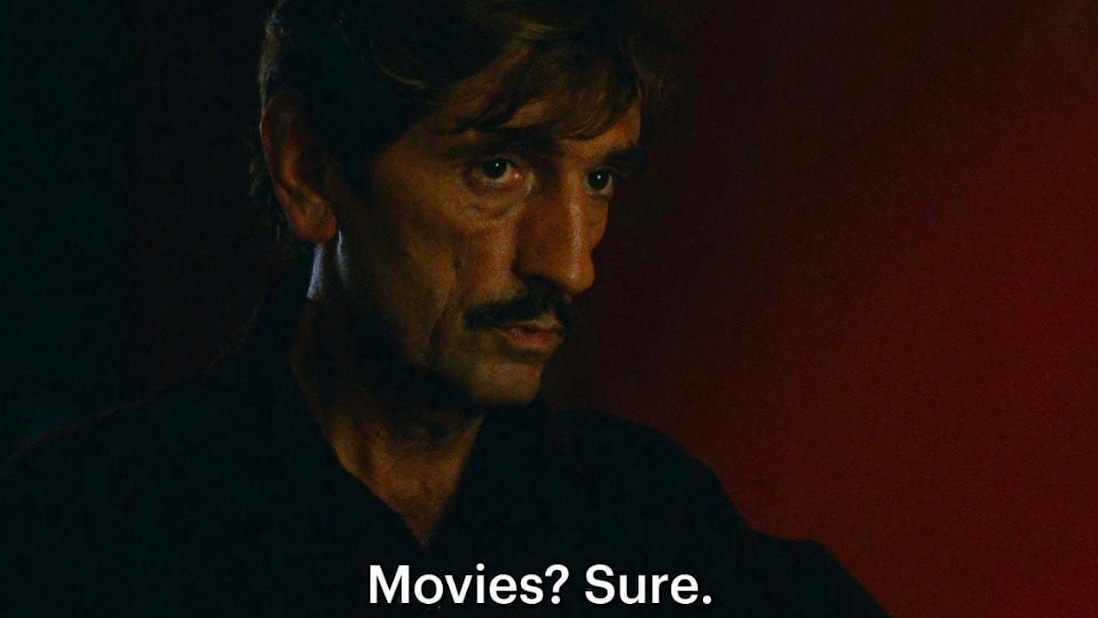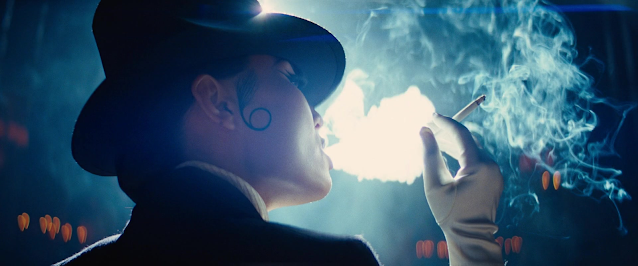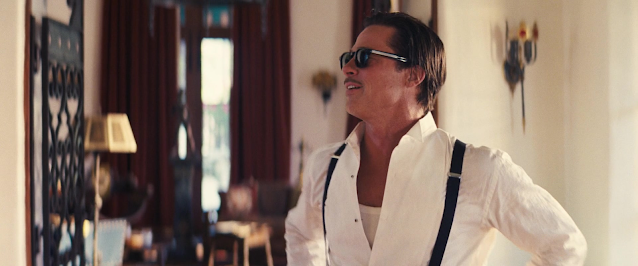Hello, strangers!
Hello, stranger...
This is a private (from time to time) blog for my cinematic obsessions and scintillating (one-sided) reflections about movies. Feel yourself at home!
This is a private (from time to time) blog for my cinematic obsessions and scintillating (one-sided) reflections about movies. Feel yourself at home!
24 februarie 2023
16 februarie 2023
07 februarie 2023
Detaliu/detalii
Todo me parece bonito en esto frame. Todo!
În același film am găsit și privirea de pe celălalt versant.
04 februarie 2023
It's all gone, Jack Conrad!
„Films went all the way to what I think is real greatness when they got that third dimension of sound.” (Frank Capra)
Măreție era și în epoca mută, deși legată mai mult de excesele vedetelor din industrie, filmul ca produs artistic nefiind valorizat în sine în condițiile în care studiourile erau ghidate după alte principii de piață și produceau pe bandă rulantă. Vedem toată strălucirea decadentă a unei lumi glam în lungmetrajul lui Chazelle, de la petrecerile sardanapalice la sistemul de producție-aspersor care era Hollywoodul anilor '20 (relevantă fiind, în acest al doilea caz, flamboianta secvență în care intrăm, alături de unul din personaje, pe un platou unde se turnau concomitent, diluvian, cel puțin 10 filme de factură diferită, fără vreo preocupare deosebită pentru calitate).
„There's one pet I like to pet...”
Evaluarea lui Frank Capra e corectă pe fond, cu amendamentul că adoptarea sunetului sincron de către cinematografia americană a fost mai mult decât o intrarrevoluție. A fost și a devenit prin implicațiile ulterioare un eveniment de proporții seismice în istoria artei și implicit a omenirii.
Dacă găsești în Babylon sursă de hăhăială (eu am fost în sală, la Elvira, cu astfel de cetățeni), well, impactul acesta tectonic poate trece neobservat (sau devine decorativ). Doar că, back then, trecerea nu a fost simplă din niciun punct de vedere: tehnologic, de limbaj, de stardom. Practic, în câțiva ani filmul sonor a resetat regulile jocului, cu pierderile colaterale inevitabile cu tot: a scăpat sau supraviețuit strict cine s-a adaptat. Cine nu, l-a înjurat pe Noe, ca-n bancul cu dinozaurii sau și-a făcut de petrecanie.
Hal Mohr, cameraman de linia întâi în epoca filmelor mute* și apoi cinematographer, odată ce statutul profesiei a progresat, povestește, recurgând la metafora elefantului, pe care o regăsim, de altfel, și-n filmul lui Chazelle, tot chinul facerii unui film sonor. Pe platou, #Dumniezo era băiatul de la sunet, adus, de regulă, din industria telefoniei. El dicta TOT:
„In the early days of making sound pictures, the experts on sound came from the telephone laboratories, and we were terrifically awed by the eggheads who came onto our stages to tell us how we were going to put sound on our silent films. They'd walk authoritatively onto the stage and say, «We have to put baffles here»; or «You can't have lights there, because that's sound reflecting»; and so on and so forth. Unsurprisingly, after we made the first sound pictures (including THE JAZZ SINGER) it looked as if sound pictures were going to be very short-lived, because, by the prevailing standards of making motion pictures, they were so bad! We did suffer tremendously from the inadequacies of being unable to meet the problems that sound put to us. (...)
The sound man at that time had been the supreme god on the set. If he said «You can't have that light there», then that light disappeared; or if he said «I want that microphone down here», that's where the microphone was placed, despite the fact that an actor had to deliver the lines and we had to photograph him. (...) All of a sudden came these trememdous soundproofed camera blimps we called «iceboxes». Each Gameca had to be encased in a completely silenced booth. If you had more than one angle of a scene to photograph at a time, it was necessary to have one camera doing the master long-shot of the scene, another camera doing a two-shot with two of the principal players, and perhaps two or three other cameras doing individual close-ups.
If you had four or five cameras operating at once, you had four or five of these huge 'iceboxes’ surrounding a small stage, which left no room for lights; and often the director had to sit atop one of the iceboxes in order to see what was going on. Your cameras, in addition, all had to be operating simultaneously, so that whenever a particular actor spoke up, or played a portion of the scene that was supposed to have dialogue in it, they would be at the proper moment in relation to the disc that was being recorded in the little booth on the side”.
În Babylon tot acest chin de a sincroniza miriada de componente tehnice este redat într-o secvență minunată - culmea, e fix cea care a stârnit cea mai mare ilaritate, n-am înțeles de ce). Da, ar putea fi amuzant, într-un fel, faptul că deși se numeau iceboxes, camerele acelea erau supraîncălzite și lipsite de oxigen, altfel, pentru operatorul din interior multiplicarea numărului de duble era... moartea, așa că pun-ul pe care Chazelle îl inserează la finalul secvenței amintite mai sus nu pare deloc implauzibil. Și-n orice caz nu e un gag, ceva ca să fie acolo pe post de brizbriz.
Mi se pare că mi-am depășit norma de text (yeah, right!) și nu simt nevoia să-l lungesc și mai tare. Ce vreau să (mai) zic este că, în ciuda valului de critici ce i se prăvălește în cap în special în State, Babylon e un film convingător, solid și emoționant despre mitologia întemeietoare (și destemeitoare în același timp) hollywoodiană. Unul cum nu mă așteptam să se mai facă.
Pus în scenă pe un aliniament de tip love & hate, what a beautiful combination, fără de care orice întreprindere de acest gen poate deveni irelevantă, Babylon vorbește cu compasiune despre toți cei rămași în urmă, pierzătorii unei lumi a filmului lovite de glaciațiunea sonoră.
P.S.: Ce mi s-a părut mie funny a fost iconicitatea metareferențială asociată lui Brad Pitt: în Once Upon a Time... (alt film despre mithologywood) e un cascador ce gravitează în jurul a tot soiul de staruri, în Babylon e Jack Conrad, megastar (trimitere la Douglas Fairbanks) în jurul căruia gravitează diverși periferici. Iar intrarea la propriu și-o face din semiîntuneric vorbind în italiană asemeni lui Aldo Raine în Inglorious Basterds.
* Într-una din cărțile sale, Michel Chion introduce, apropo de sintagma „film mut”, o nuanță foarte subtilă & aptă în esența ei, la care subscriu:
„How did spectators know that the characters were speaking? By the constant movement of their lips, their gestures that told of entire speeches whose intertitles communicated to us only the most abridged versions. So it's not that the film's characters were mute, but rather that the film was deaf to them.”
Abonați-vă la:
Postări (Atom)








